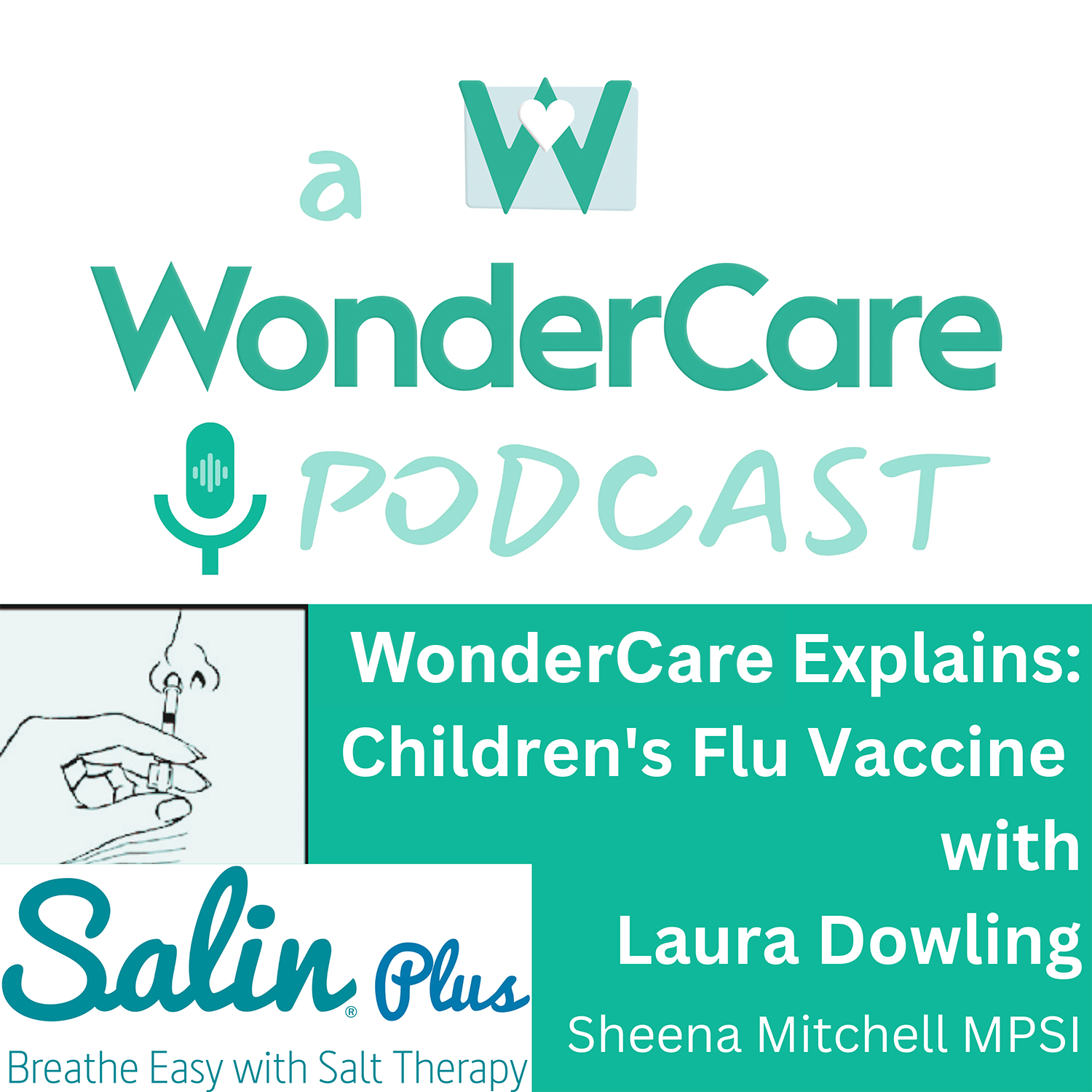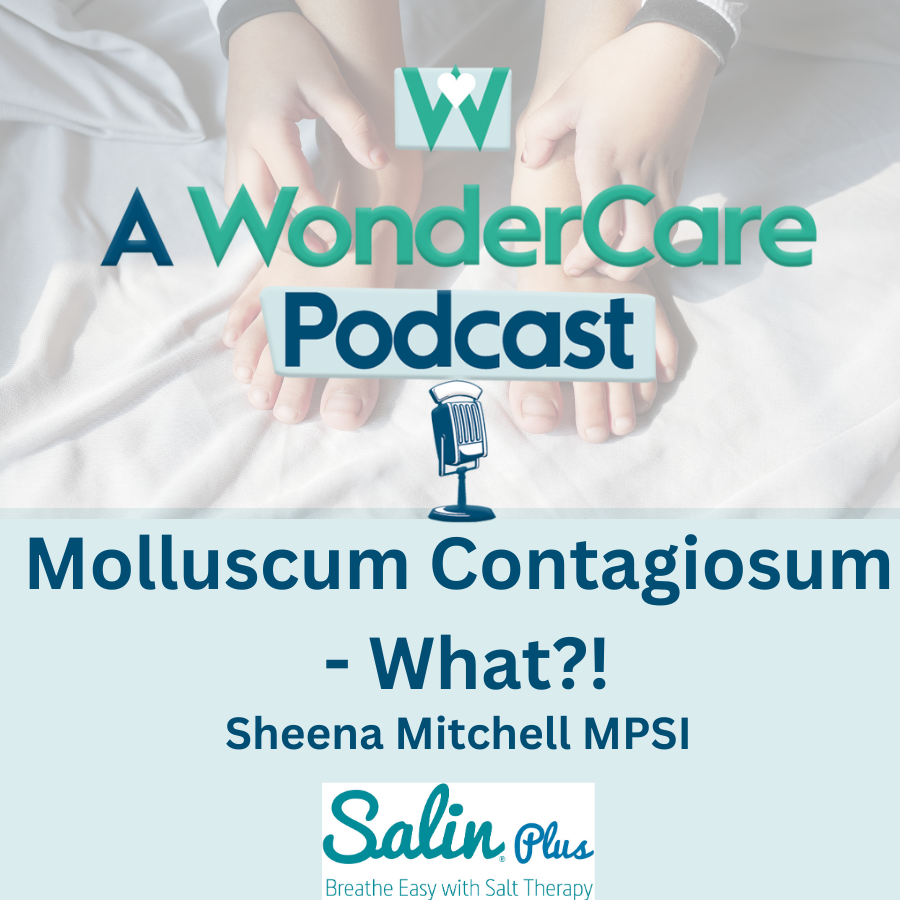Episode Transcript
Speaker 1 00:00:03 Hello and welcome to the Wonder Baba podcast. My name is Sheena Mitchell. I'm a pharmacist and mom of three. I combine healthcare and practical advice to help you on your parenting journey. Today I'll be talking all about ear infections in children. So there's different types of ear infections. You've got middle ear infections and outer ear infections. Outer ear infections are usually due to something like eczema or water in the ears or from wearing earplugs, basically irritation to the ear canal. Today I'm gonna be focusing on middle ear infections. So these are the types of ear infections that usually affect children.
Speaker 1 00:00:42 There's different types of mid ear infections, so I'll talk about the differences between them in a minute. But first I'm gonna explain a little bit about what ear infections are, what are the signs and symptoms. Then we'll talk about the different types, and then we will move on to when you need to see the doctor, how to treat them at home or if you need medicine. And then I'll give you lots of top tips on how to reduce the risk of ear infections. So this is a quick guide which hopefully answers all of your ear infections questions. If there's anything that you need more information on, just pop me a little message through Instagram or Facebook messaging. You can find me at Wonder Baba, and if you enjoy the episode, it would be amazing if you could leave a review. So let's get started.
Speaker 1 00:01:30 What is an ear infection? Well, an ear infection is inflammation of the middle section of the ear, which can be caused by a virus or a bacterial infection. An ear infection basically causes fluid to build up behind the eardrum, and that is what causes the pain. It often occurs after a sore throat, a cold or an upper respiratory infection, as all of these sicknesses give way to a perfect breeding ground for bacteria and make it easy for viral infections to spread in the middle ear. Sore throats, Colds and upper respiratory infections cause inflammation of the passageways between the ear and throat, and the middle ear is basically the tube that runs between the eardrum and the back of the nose. So it's clear enough to see that everything is connected. It's understandable how ear infections could occur. So children have smaller tation tubes than adults. So again, you station tube is that tube that runs from the eardrum to the back of the nose. And also their immune systems are a little less efficient because they haven't had as much exposure to illness as US grownups have, and it makes them a little bit more susceptible. In fact, 75% of children will experience an ear infection by the time they celebrate their third birthday.
Speaker 1 00:02:46 Okay, so how do you know your child has an ear infection? Here's some of the signs and symptoms. So they can be complaining of an ear. So if they're old enough to tell you, they can be saying that they have a pain in their ear, they can also have a high temperature, they can even feel a bit nauseous or be vomiting. They can be a bit lethargic, so low on energy, they might be struggling to hear you like normal. They might become a little bit clumsy, so more clumsy than your average toddler. So basically their balance is affected. So they might be falling or leaning against things more than they normally are. It can be hard to notice this, but when you know your child, these little things don't sit right with you. For children who are young and not able to communicate, obviously they can't say, Hey mommy, I've got a pain in my ear.
Speaker 1 00:03:30 So those kids, you'll just see them pulling at their ear a lot and kind of making faces and rubbing at their ears. They'll be in a bad mood and they'll be struggling with sleep. Now we know what an ear infection will look like in your child. It's time to talk about the different types of middle ear infection. So three main types. The first one is acute otitis media, and basically this is the most common type of ear infection. It's when the fluid builds up behind the eardrum and it causes pain and possible fever. In severe cases, the pressure of the fluid can build up so much that a little hole is formed in the eardrum and pus might actually run outta the ear. Woo. I know this is horrible and frightening to see, but this type of perforation usually signals the end of the condition as the release of fluid will relieve the pain which was present due to the pressure.
Speaker 1 00:04:21 So while it's good news sometimes to see using it of an ear, it's really important that the doctor has a little check over your little one after a perforation. And this is just to make sure that the infection is gone. The next type of ear infection is otitis media with effusion known as gluten ear. So sometimes after an acute ear infection, some fluid might get trapped behind the eardrum. Often there's no symptoms of this condition, which in short we call O M E, but the doctor will see the fluid using a device called an otoscope. This problem can sometimes affect hearing, and so difficulty hearing may be the only indication. So this is a good thing to watch out for if your child has had a sore or perforated ear in the last few weeks. And finally, the last of the three main types of ear infection.
Speaker 1 00:05:07 This is called chronic otitis media with a fusion. This is basically when the fluid remains trapped behind the eardrum for a really long period of time, or it keeps coming back even when there's no infection. This can leave the child susceptible to further infections and can also affect hearing. So just before I go on to how to treat ear infections in home and some top tips on pain relief and also preventing ear infections, also when to see the doctor, I just want to tell you a little bit about this season sponsor. I'm delighted to partner with one of my all time favorite products, Salus. This is the world's first 100% natural dry salt therapy device. It's clinically proven to relieve a wide variety of allergens and respiratory conditions. The salt therapy method has been trusted for generations and has become hugely popular worldwide. As more and more people recognize the superb results achieved from a natural and noninvasive method, this device will help you breathe easier and sleep better.
Speaker 1 00:06:10 Okay, the treatment of ear infections, Well, ear infections are often self-limiting. So we use that term a lot when we talk about colds and viruses while you treat the symptoms, really they will resolve themselves. It's something that will get better by itself with time. So a lot of your ear infections require no treatment other than relieving the symptoms. For this, you can use cal PolyPhen when needed and make sure you follow the manufacturer's instructions. It also can be helpful to use a cold compress and hold it over the ear. That can sometimes help get rid of some pain.
Speaker 1 00:06:45 So when to see the doctor, it's a good idea to see the doctor if there's no improvement to your child after 48 hours or if your child is in serious pain. So if they're inconsolable, you can also bring them. If you suspect your child has any hearing issues or if your child has a persistent high fever of over 38 degrees Celsius, I'd bring your child to the doctor if you suspect that they have any disturbance to their balance. I know this can be tricky to identify when we're talking about wobblers anyway, but you'll know yourself what's a normal amount of wobbling and what's not. Also bring them to the doctor if they have any swelling around the ear. So if anything's looking inflamed, then it's time for the doctor. So if the Eric hasn't cleared up and you know it's been two to three days and you've decided to visit the gp, the treatment the GP decides then depend completely on what they find after examining your child.
Speaker 1 00:07:42 So looking in your child's ear with an otoscope, it may include a seven to 10 day course of antibiotics if there is a bacterial infection. And with that, it's really important to finish any course of prescribed antibiotics completely. And if you have any questions about the antibiotics your child has been prescribed, make sure you ask for the pharmacist to explain them when you're collecting your prescription. Sometimes we're busy, but we are always happy to give advice and acutely we'll do it without being asked. But sometimes you might just lead a little bit more information like whether or not you can take onto bed liquid food or whether it needs to be kept in the fridge. And we are there for all of that. So finishing the course is important because that's what helps to prevent the infection from coming back after a short time. And sometimes when they come back, if you haven't finished the course of antibiotics, the ear infection can actually come back worse.
Speaker 1 00:08:38 So even a bit more aggressive, sometimes the doctor will have a look at your child's ear and say there's no bacterial infection there. So they might just recommend observation and treating the symptoms of the infection and remembering that if it's viral, then antibiotics aren't going to do anything anyway other than maybe potentially upset your child's stomach. And as I kind of mentioned at the start, it is important to remember that the ear ache wouldn't be due to viral or bacterial infection at all. It could be an outer ear infection, for example. But even things like allergy can cause swelling of the use station tube and decreased drainage in cause pain, obviously when we're talking about kids, it's always a possibility that there is an obstruction in the ear. So it can be just something you'd hope like wax, which is meant to be in there.
Speaker 1 00:09:30 But with kids you never know. Ears a great place to store things in my experience, but your doctor would be able to check and see if your child has been shoving anything in there or not. Another thing that can cause you your pain is teething. And I'm sorry, I don't know if you can hear the rain in the background, but I'm recording in my little garage as they normally do, and it's absolutely pelting it in winter is definitely, definitely here. Okay, we now understand that there's loads of different things that cause earache, some of which include different types of infection, and sometimes an antibiotic will be helpful and sometimes it quite simply won't. So remember to take your GPS guidance on board. I know a lot of parents come in to buy paracetamol or ibuprofen or different types of pain relief for their child when they have an ear infection and they have been to the doctor and sometimes they feel a little bit frustrated that they've gone to the effort of bringing their child to the doctor and they've left without a prescription for antibiotics. And I suppose I just want to reassure parents that that's actually sometimes a good thing because unless there's a bacterial infection there, there's just no point.
Speaker 1 00:10:48 Okay, so some top tips about ear infections. As always, wash, wash, wash those hands, yours and the child to help prevent any chances of infection spreading. I have the hand gel at the front door for everyone coming in and out, especially the kids from school. Those 500 mil bottles with a pump are fantastic. Try and make sure that your sick child is not playing with other children and equally that your healthy child is not playing with other sick children. This is tricky, but a little bit easier since we started being so infection aware after covid. So sometimes the treatment of ear infections can be about treating other issues as they arrive. So as we said, the common cold flus, viruses, congestion can all, you know, cause an ear infection down the road. So making sure that if there's any congestion going on right now in your child, you're using something like a humidifier.
Speaker 1 00:11:44 So I always recommend the medi one. I will pop a link in the show notes. These are really good at making sure that the MU is if your child is very blocked up, that the mucus runs down the back of their nose and keeps thin. So another product which I spoke about there earlier on is the Salmon plus. And this is your prevention product. So this is one that you use every single night popping in your child's room, turn it on, and it basically cleans the air for you. And also disperses micro crystalline soft particles into the air. And what these help to do is prevent any mucus getting clogged in any of the airways. And they also help to reduce inflammation. So very useful at preventing this kind of scenario. One important thing to note, while I'm recommending two different products there, it is imperative that you do not use them together.
Speaker 1 00:12:38 Humidity and the SA plus do not mix. So I use the SA plus every single night, you know, in a bid to keep my children infection free. If congestion happens and if they get a bad head cold, I actually plug out the SA plus pop it in the hot press to keep it away from any humidity. And then I turn on a humidifier like the Sana one in my room or well in the child's room and add a few drops of scuffle bay vapor oil into the little side compartment that takes aromatherapy oils. And this just helps to kind of keep all the mucus running, but there's certainly enough products that you use at the same time. Remember, use that cold compress up against the ear to alleviate some pain and keep an eye on how often your child is getting an ear ache because recurrent ear aches can be an indicator of fluid retention.
Speaker 1 00:13:27 And this is the kind of thing your doctor needs to know about to make sure that any risk of long-term hearing difficulties are prevented. Sometimes an eard drop may be recommended. And just remember, if you're putting eardrops into your child's ears, just give them a little wipe with cotton wool beforehand. Do not stick a cotton wool bud in there or your fingers in their ears. You don't want anything that could further compact wax in the ear. So just literally a little wipe with some cotton wool on the outer ear. Then warm up the bottle of eardrops by rubbing it in your hands because very cold eardrops can actually make you feel a bit dizzy. Basically, get your child to lie on their side and then pop the drops in and gently massage behind the ear and you know, very easily and gently pull and push it to help the drops go right down into the air canal if you can get your child to lie down for five minutes so the drops don't come out great.
Speaker 1 00:14:24 If your child is getting recurrent ear infections and they like to swim, you should really try and keep your children's ears dry. If they're infection or they suffer with recurrent ones, there's a really cool product which helps you do that, that they can wear in the shower bath, or even in the swimming pool. So it's called the ear bandit. I'll put a link up in the show notes as well. And that comes with little silicone putty buddies that are waterproof earbuds. Basically you just pop them in the ears and pop the little headband on over their head. Don't worry, it sounds scary, but it's not. They're actually in quite cool bright colors. And if you're outdoors, you know, generally in pools, kids will be wearing swimming hats anyway, so they won't even be noticed. But they're quite cool. So that is definitely a recommendation for keeping the ears dry and it can be really useful to stop getting shampoo in the ears when your child's getting their hair washed or whatever.
Speaker 1 00:15:25 So I think that is just about everything. So I hope you found this really, really helpful and you now know what to do if your child gets near infection. I am really grateful for you for listening and if you can share this podcast with any parents you know who want lots of information on different medical issues and how to treat them and prevent them, and lots of practical advice from a pharmacist and mom, if you could share this with them, that would be fantastic. Thank you so much and I will talk to you again soon.


